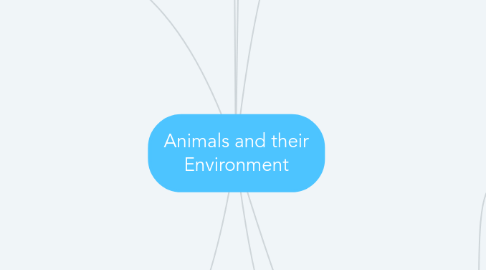
1. Food Chains
1.1. When the plant at the beginning of each food chain are destroyed, there is nothing for animals to eat. If they can't move away they die.
1.2. When any plant or animal disappears, more than one food chain may be disrupted
1.3. things in a food chain
1.3.1. Predator
1.3.1.1. eats another animal
1.3.2. Prey
1.3.2.1. eaten by animals and eats plat
1.3.3. Herbivore
1.3.3.1. only eats plants
1.3.4. Carnivore
1.3.4.1. only eats other animals
1.3.5. Omnivore
1.3.5.1. eats plants and animals
1.3.6. Scavenger
1.3.6.1. eats dead animals
1.3.7. Producer
1.3.7.1. makes its own food
1.3.8. Consumer
1.3.8.1. gets energy from other animals
1.3.9. Decomposer
1.3.9.1. dead animals
2. Earth
2.1. Earth's Atmosphere
2.1.1. We couldn't survive without the atmosphere. the layer of air around the Earth allows us to breath, lets plant make food, keeps the Earth warm, and shields us from harmful radiation.
2.2. Ozone
2.2.1. the ozone is vital to our survival. It stops harmful ultraviolet radiation reaching the Earth.
2.2.2. it is getting damaged by CFC which is any thing that contains carbon, hydrogen, chlorine, and fluorine, typical gases used in refrigerators.
2.3. Acid Rain
2.3.1. when feuels burn, an acidic gas escapes into the atmosphere along with sulfur. the substance then dissolves in rainwater and makes acid rain. Acid rain damages trees, building, and harms life in lakes and rivers
2.3.2. How to deal/prevent acid rain
2.3.2.1. take sulfur out of fuels before buring them
2.3.2.2. Neutralize acidic gases before they can escape.
2.3.2.3. Neutralize lakes and soil that are already damaged.
2.4. Carbon Dioxide
2.4.1. Plants take carbon dioxide out of the atmosphere, and all living things put it back when they breath.
2.4.2. works like the glass in a greenhouse.
2.4.2.1. It lets light from the Sun through, but stops some of Earth's heat escaping. the more carbon dioxide there is in the atmosphere, the hotter Earth will get. this change in the Earth's temperature is called Global Warming.
3. Preventing Extinction
3.1. Lost Animals
3.1.1. Any animal whose species is no longer found in the world is extinct.
3.2. Providing Sanctuaries
3.2.1. Saving animals from extinction is called conservation, and it is mainly carried out by charities.
3.2.2. Wildlife Sanctuaries
3.2.2.1. Special areas where animals are protected
3.3. Removing Predators
3.3.1. by removing the predator, the prey will have nothing to fear and will be able to reproduce safely.
3.4. Captive Breeding
3.4.1. When a few of a species is left, a captive breeding program will start and they will get animals of this species, put a bot and a girl together, and make them reproduce to make sure that the species continues to live. after they done enough, they will release the animal back into the wild.
4. Savannah
4.1. Need fire to Survive
4.2. Two Seasons
4.2.1. Very Wet
4.2.2. Very Dry
4.3. African Savannah is becoming a desert at 50km per year
4.4. Adaptations
4.4.1. For Drongo
4.4.1.1. Follow wildfires
4.4.1.2. Eats animals that are trying to run from the fire
5. Rice grows in flooded fields. if fish are added to the water, the rice and fish help each other. they both grow well without chemicals. the fish eats the insects that would damage the rice and their waste products provide the minerals rice needs. in return, rice keeps the water clean and cool for the fish.
6. Habitats
6.1. Rainforest
6.1.1. Receive at least 2m of rain each year
6.1.2. It has been in America for around 55 million years
6.1.3. Topical Rain Forests are found in Central and South America, Australia, Asia, and Africa
6.1.4. Adaptations
6.1.4.1. For Toucans
6.1.4.1.1. Claws to hold on to trees
6.1.4.1.2. Huge beak for food
6.2. Desert
6.2.1. Extremely dry
6.2.2. Less than 10in. of rain each year
6.2.3. Cover a third of the world's landmass
6.2.4. Adaptations
6.2.4.1. For Fennec Foxes
6.2.4.1.1. lose heat from blood vessels in its huge ears
6.2.4.1.2. avoid heat by hiding underground
6.3. Tundra
6.3.1. People travel from town to town by boat, plane, or dog sled
6.3.2. Landscape and climates are harsh
6.3.3. Very few plants grow
6.3.4. Apatation
6.3.4.1. For Polar Bears
6.3.4.1.1. Able to smell a seal lying on ice from 32km away
6.3.4.1.2. Thick fur
7. Feeding Ourselves
7.1. Habitat Destruction
7.1.1. cutting down trees to sell wood and use the space for crops. More than half the trees in Borneo have been cut down.
7.2. Pollution
7.2.1. Some farmers use chemicals to grow more food on less land.
7.2.1.1. Fertilisers
7.2.1.1.1. Give extra nutrients to plants so they can grow bigger/faster.
7.2.1.2. Herbicides
7.2.1.2.1. Stops weeds from growing
7.2.1.3. Insecticides
7.2.1.3.1. Kills pests/insects that eat the plant
7.2.2. If these chemicals are not used correctly, they damage plants and animals.
7.2.2.1. Fertilisers
7.2.2.1.1. Too much fertiliser runs into rivers, fish die
7.2.2.2. Herbicides
7.2.2.2.1. Destroy wild plants
7.2.2.3. Insecticides
7.2.2.3.1. Kill useful insects less bees
7.3. Invasive Plants and Animals
7.3.1. Invasive plants and animals are damaging food chains all over the world
7.3.1.1. Plat or animal that go to a new environment, increase in numbers and cause problems in the new ecosystem
7.4. Planning for the Future
7.4.1. if we could grow more crop plants faster, there would be more to go round
7.5. Growing more Producers
7.5.1. We could use micro-organisms to make fuels and animal feeds, so we have more land left to grow food.
7.5.2. if we built tall greenhouses in city centers, we could grow more food on less land.
